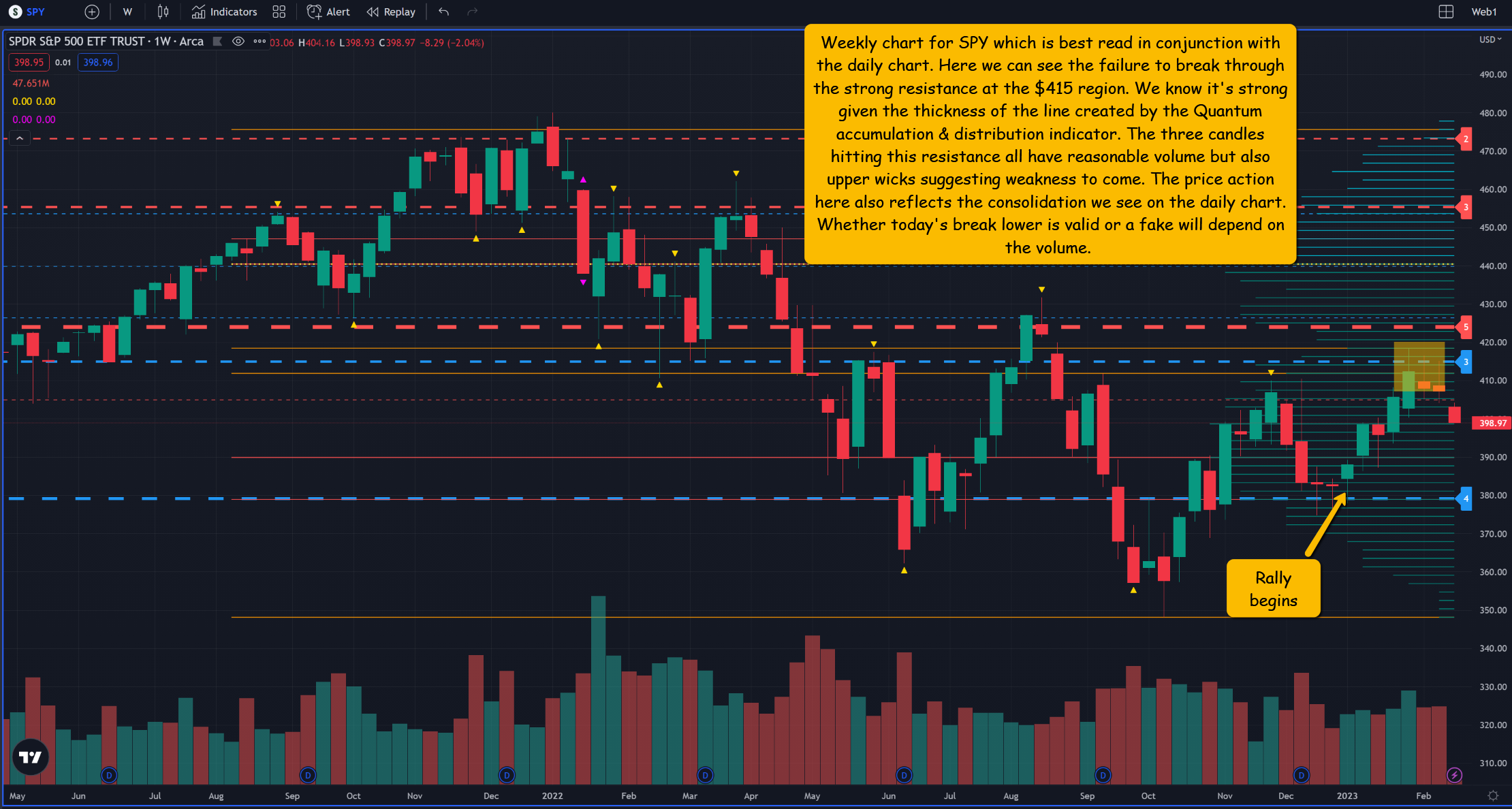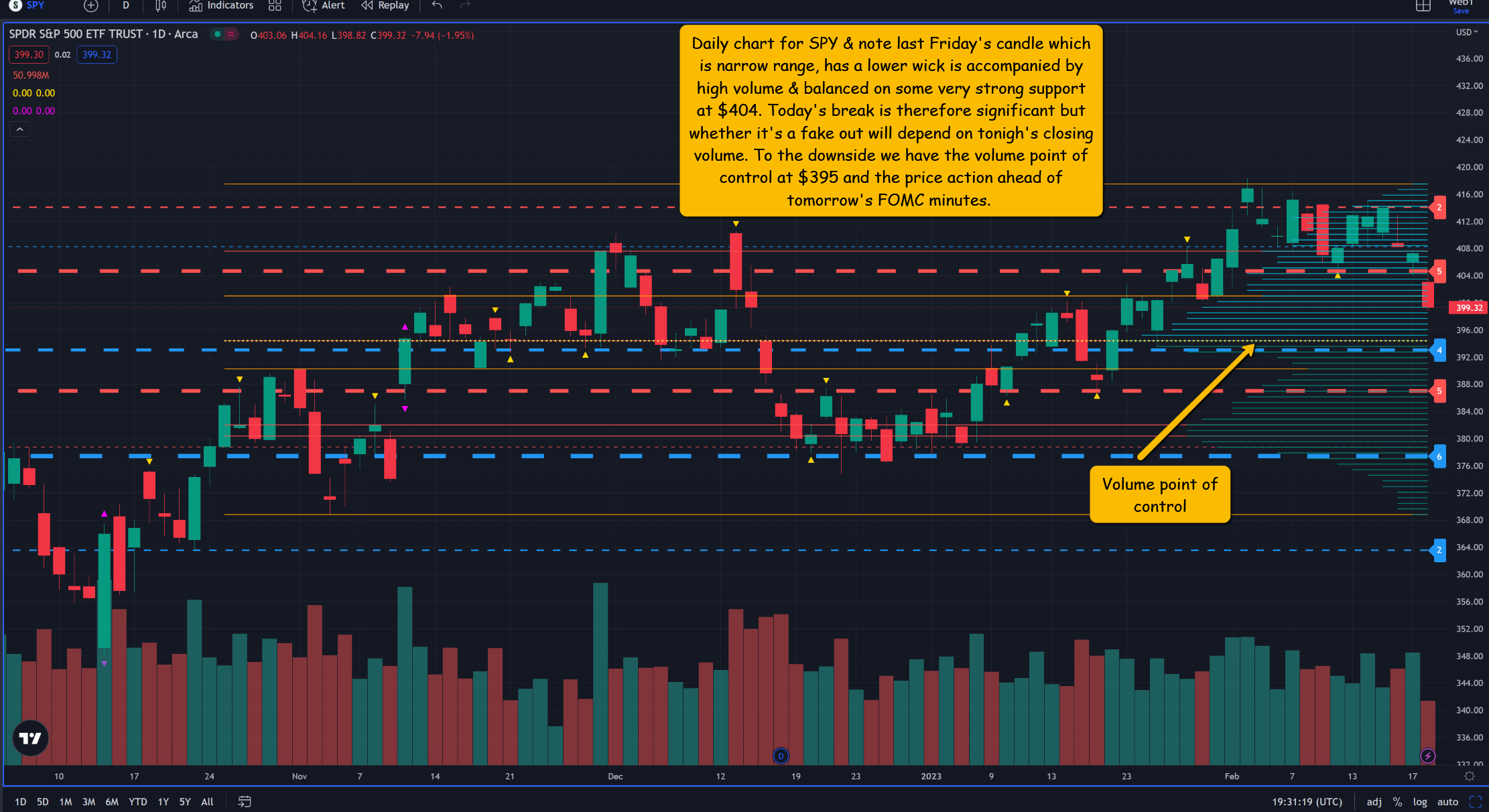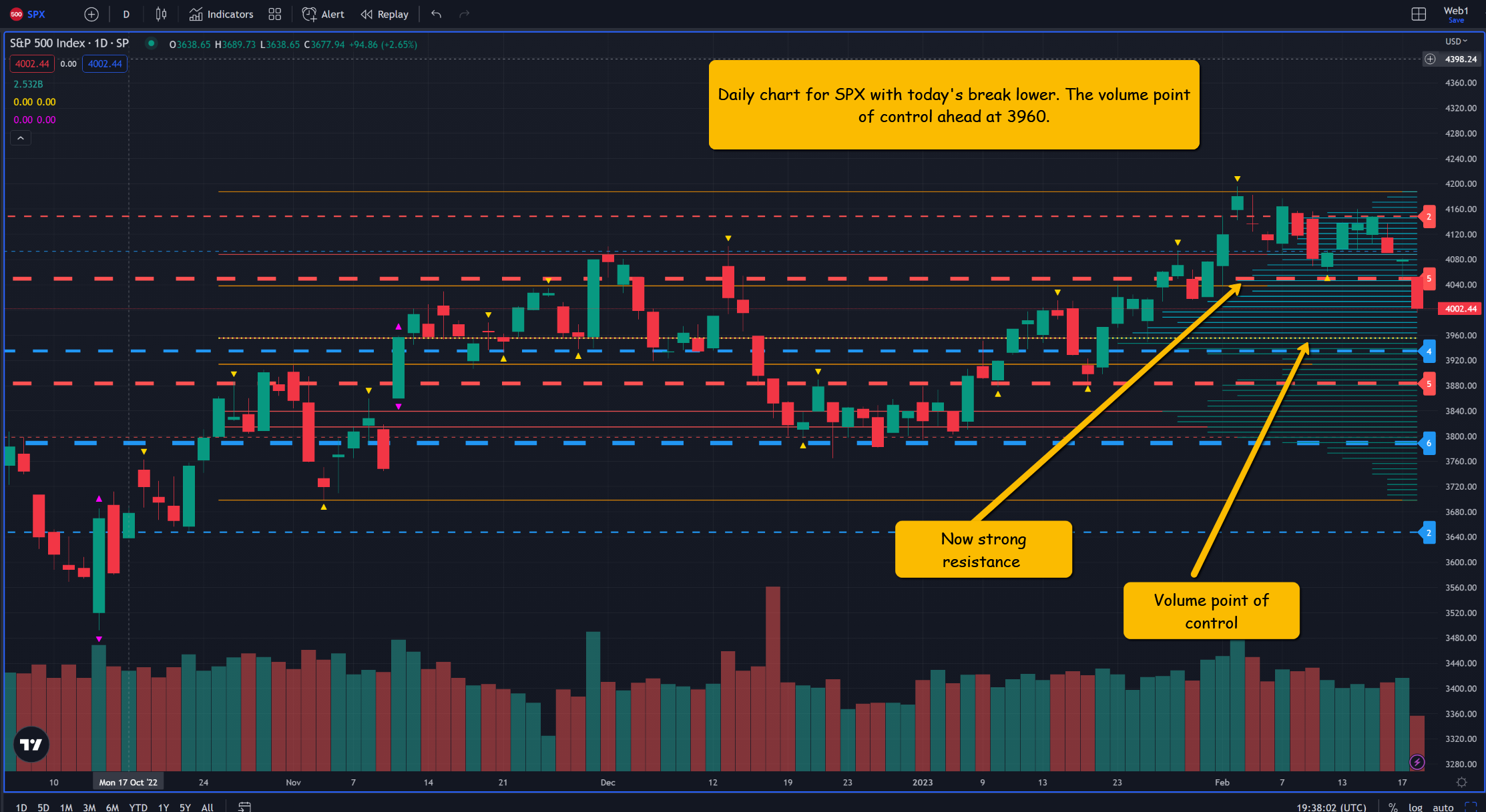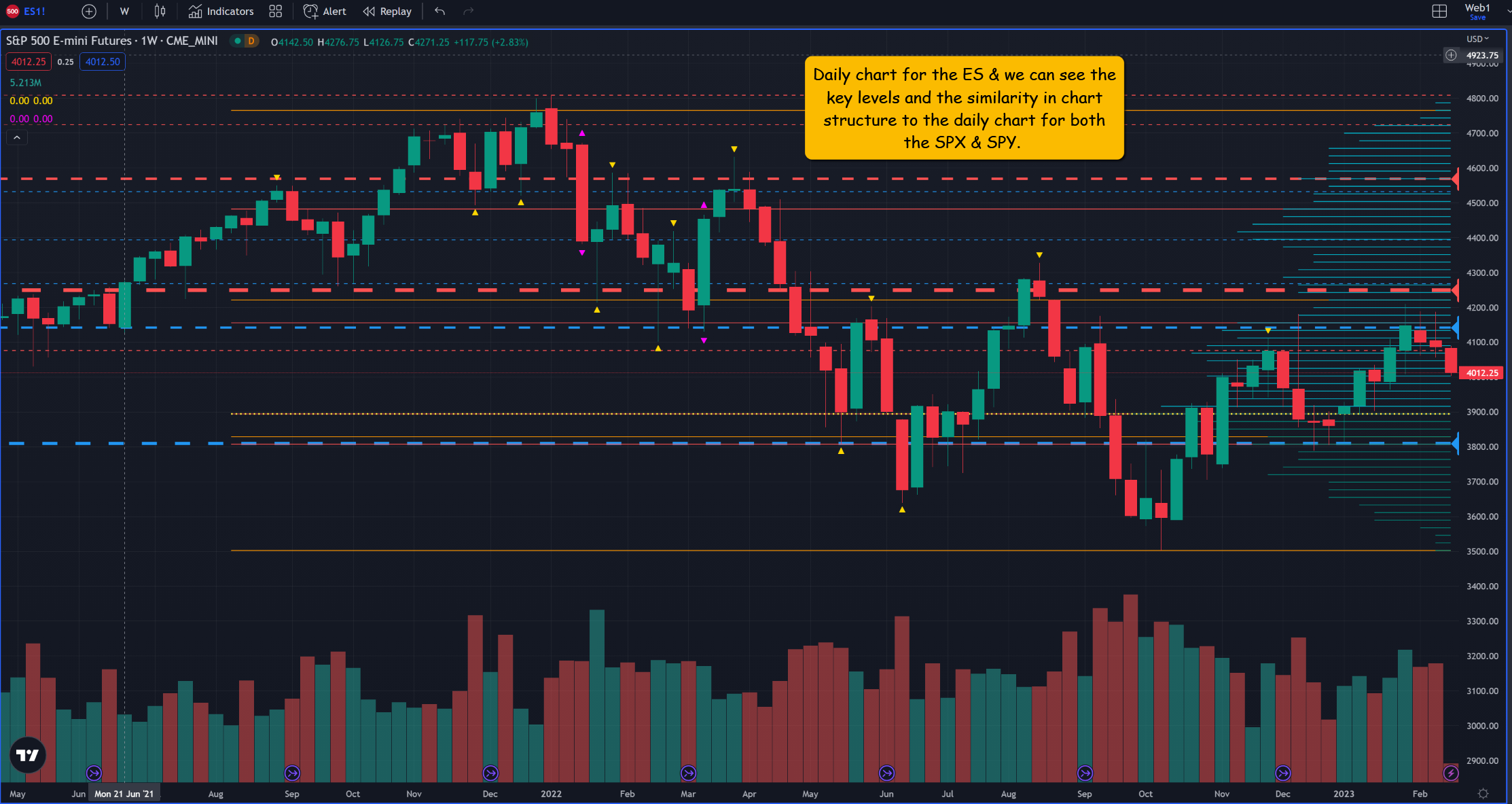In my post on Tesla (NASDAQ:TSLA), I mentioned retail investors had poured almost $10bn into the stock since the beginning of this year, making it the top destination for inflows and outstripping the SPY, which came in second with inflows of $3.6 billion.
The next three spots are taken by Amazon (NASDAQ:AMZN), Apple (NASDAQ:AAPL), and Nvidia (NASDAQ:NVDA), and I will be covering these in subsequent posts. However, it is SPDR® S&P 500 (NYSE:SPY) I want to focus on in this post, not least given today’s price action, which has seen SPY fail to hold onto last Friday’s holiday weekend’s gains and break lower.

Once again, I want to consider the weekly chart where this year’s bullish move in the ETF came off strong support at $380, with the rally supported by good volume until the price action hit the resistance in the $415 region.
And although the last up candle in the trend was accompanied by the highest volume, the upper wick was also a signal of a potential pullback which is confirmed by the two subsequent candles. The question now is whether the current break lower is a fake-out, and we won’t know until today’s close, or whether it continues, and if so, where the price action is likely to pause.

For this, we need to consider the daily chart where $395 is the most obvious level and is where we also find the volume point of control.

The daily charts for both the SPX and ES are similar in structure, which is what we would expect, and I have included them here for completeness.
Yesterday's move lower in the SPX also saw the VIX spike higher to trade at 23, although it has not, as yet, taken out last month’s high of 23.76.
From a fundamental perspective, the market is waiting today's FOMC minutes, when both traders and investors hope for some clarity as to whether the upward pressure on rates is over or not. Last week’s comments from Bullard and Mester would suggest otherwise.
One final point about the SPY in terms of its YTD performance investors would have had a much better return from the Invesco QQQ Trust (NASDAQ:QQQ). In January alone, the return on SPY was 6.18% against 14% in QQQ, confirming a return to the tech sector after last year’s dismal performance.
